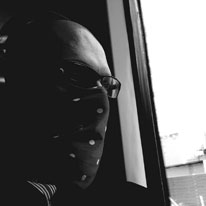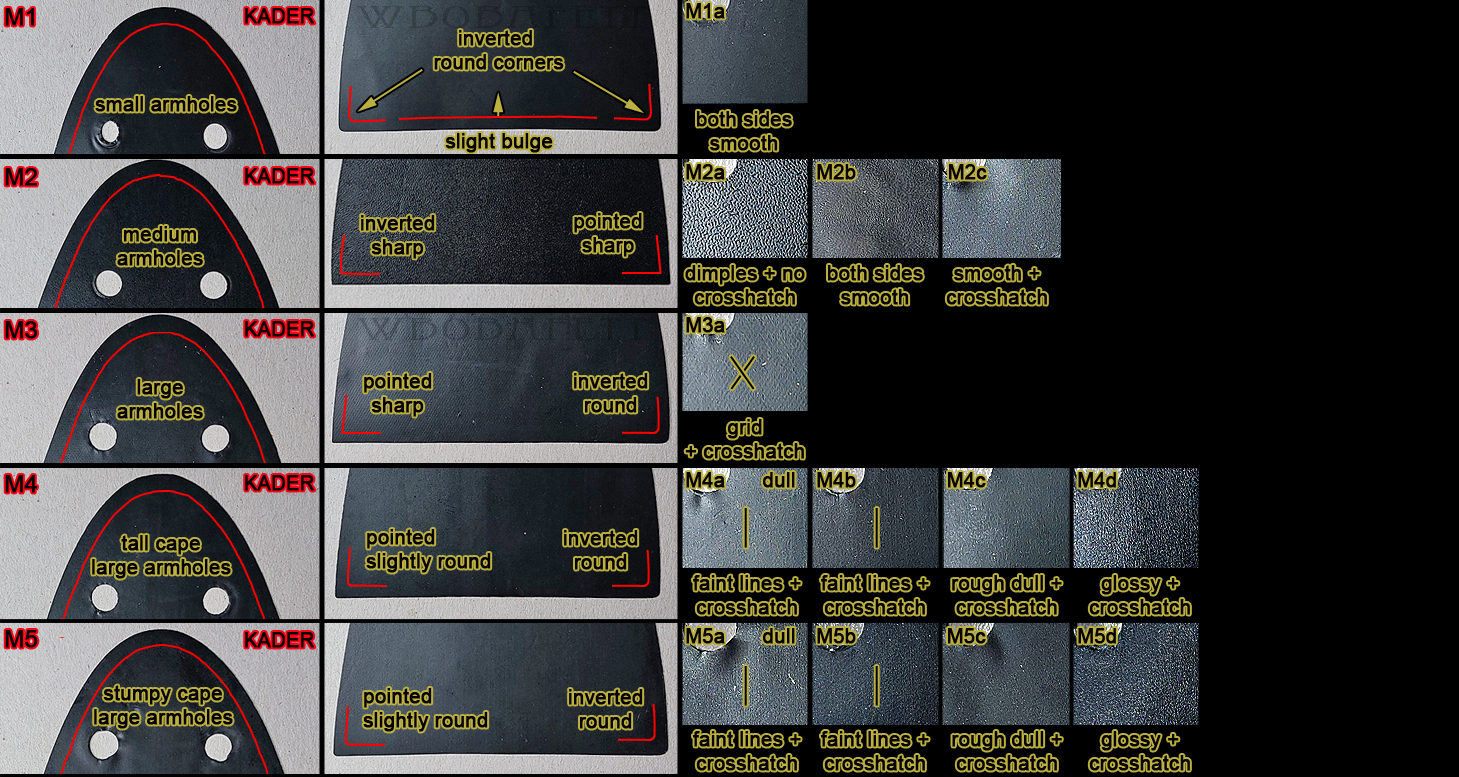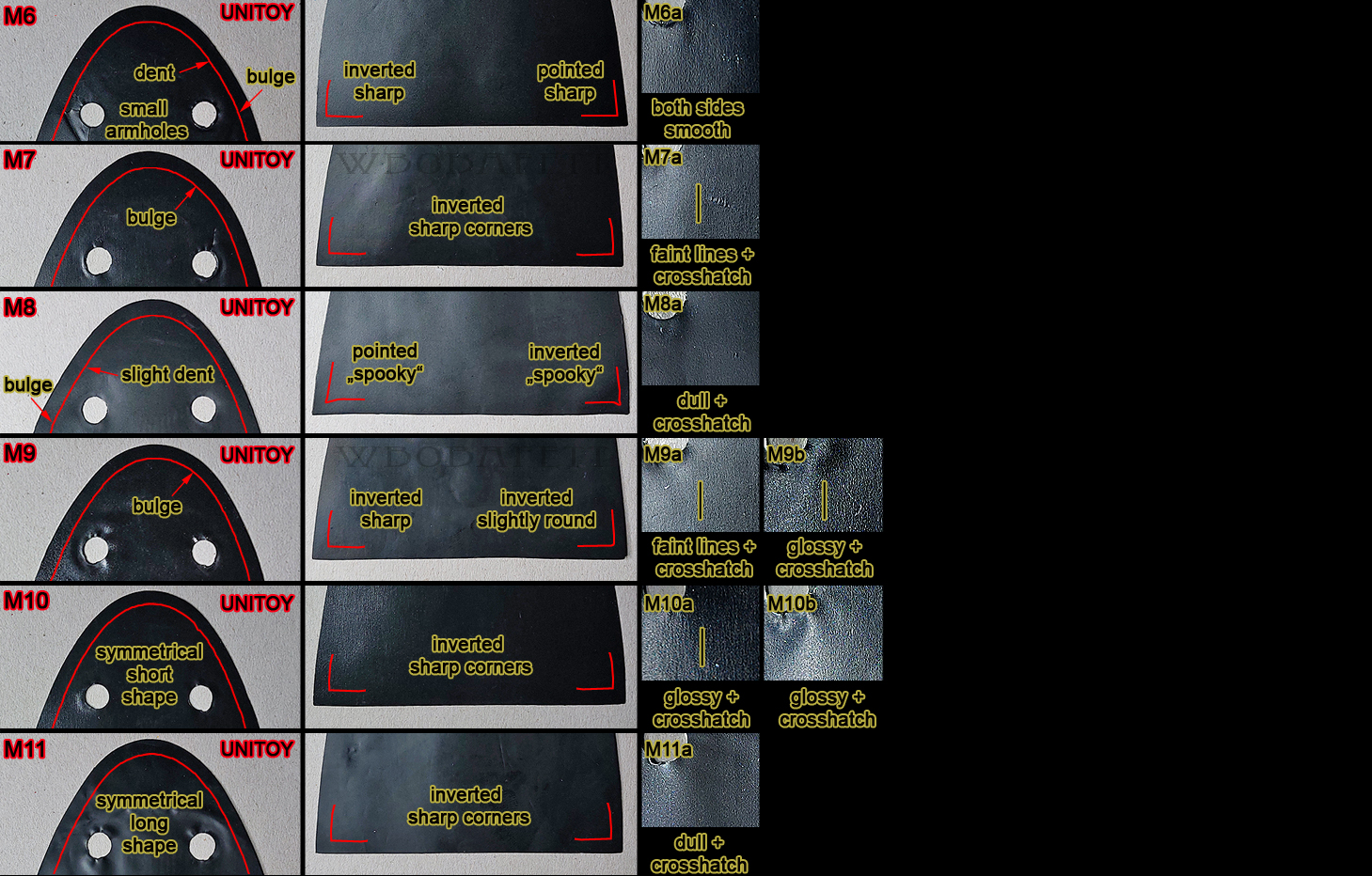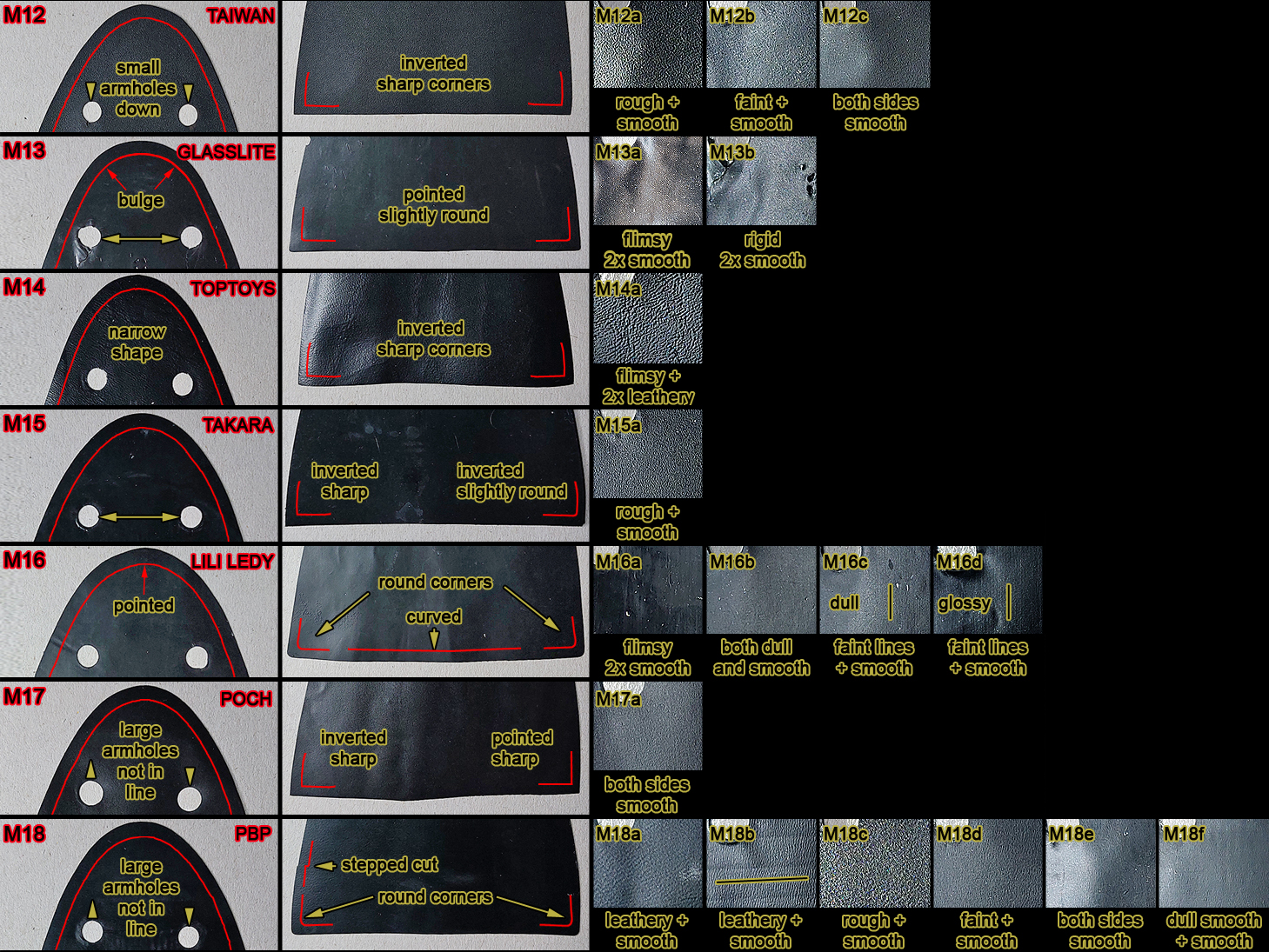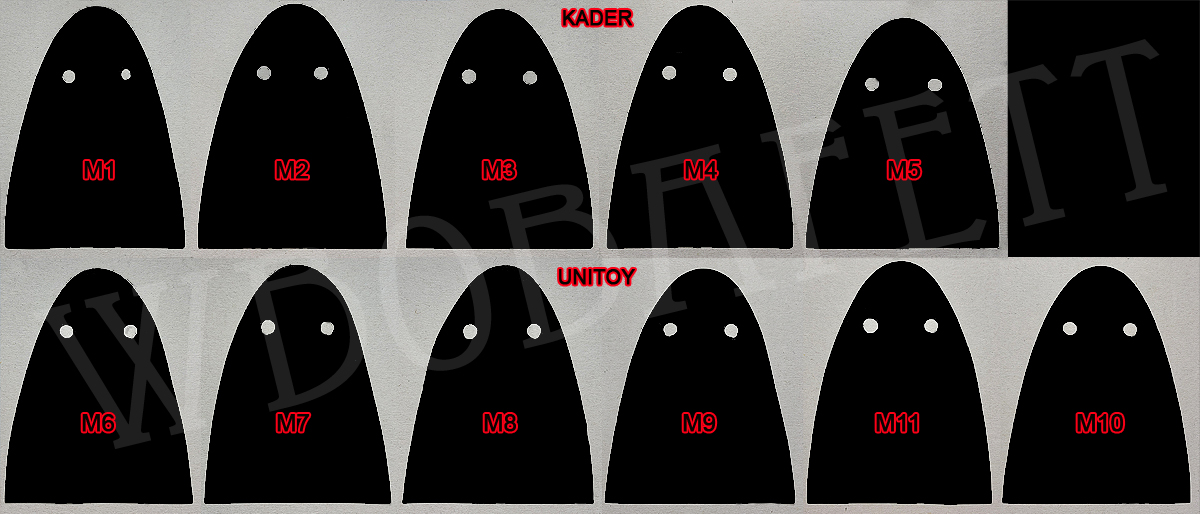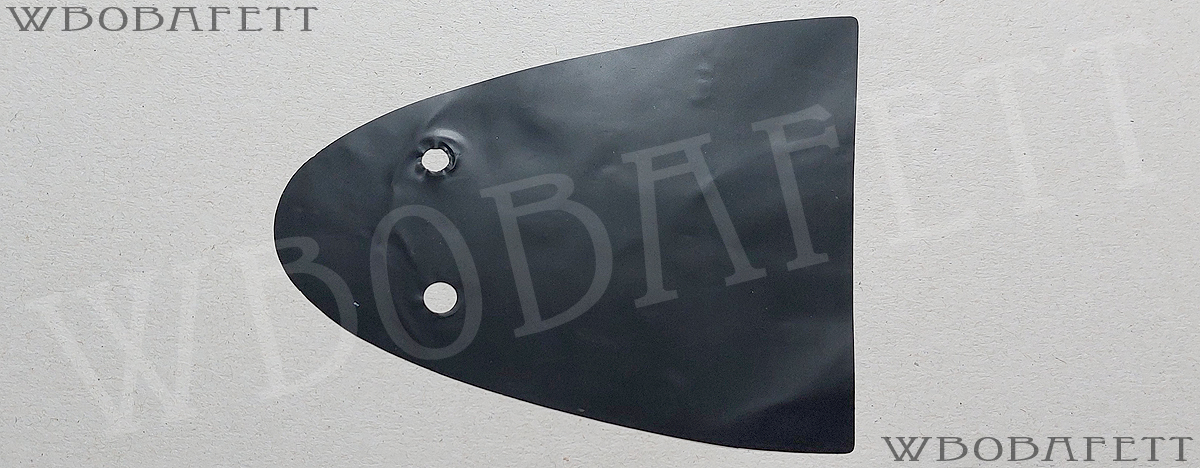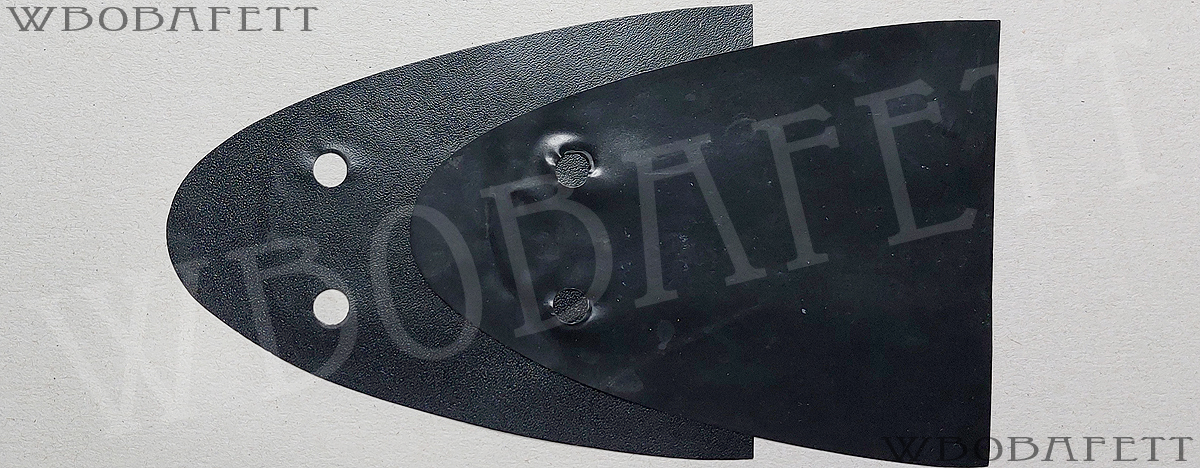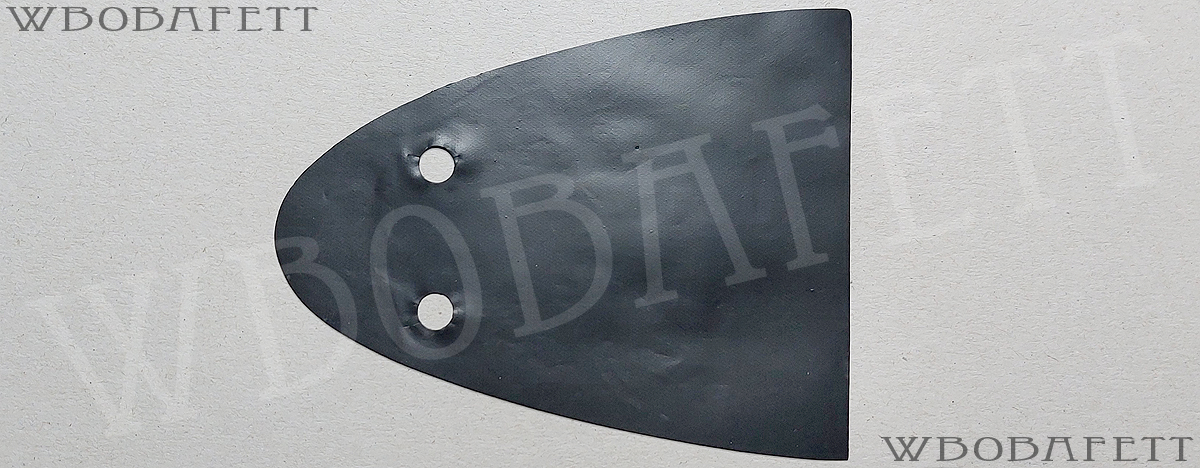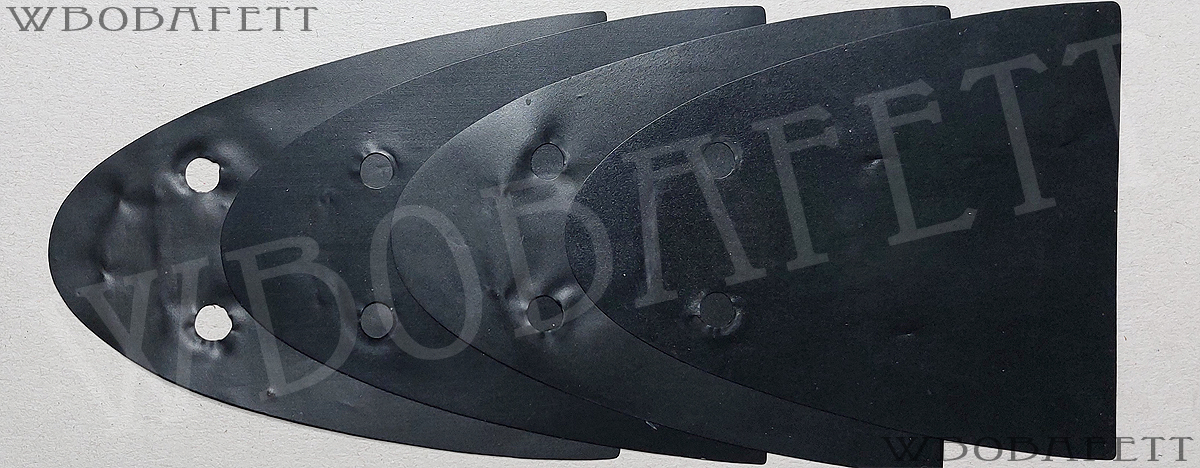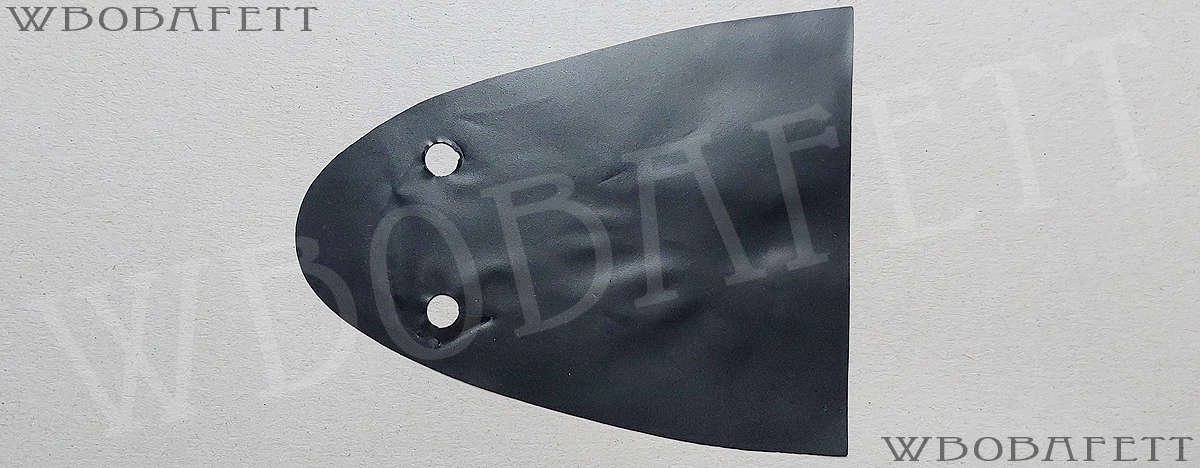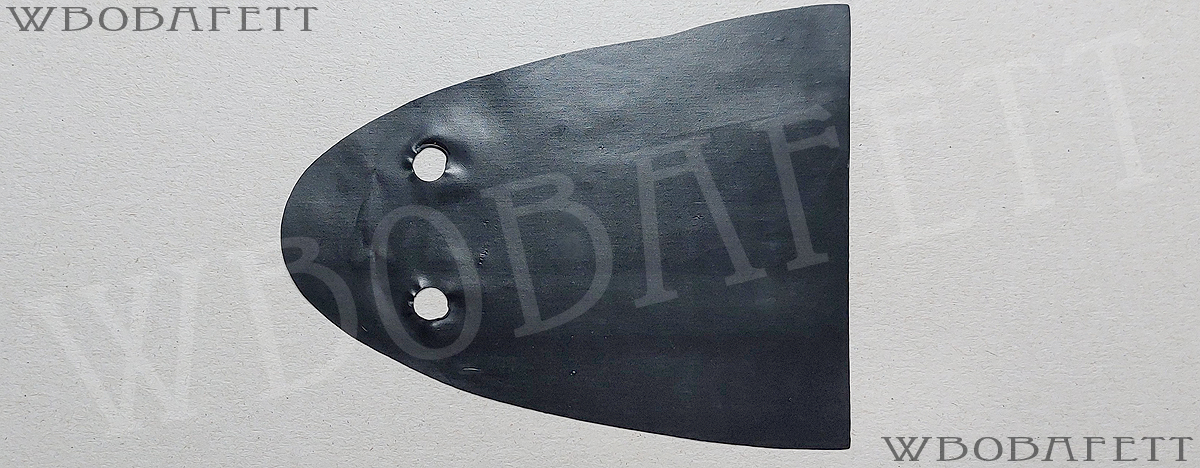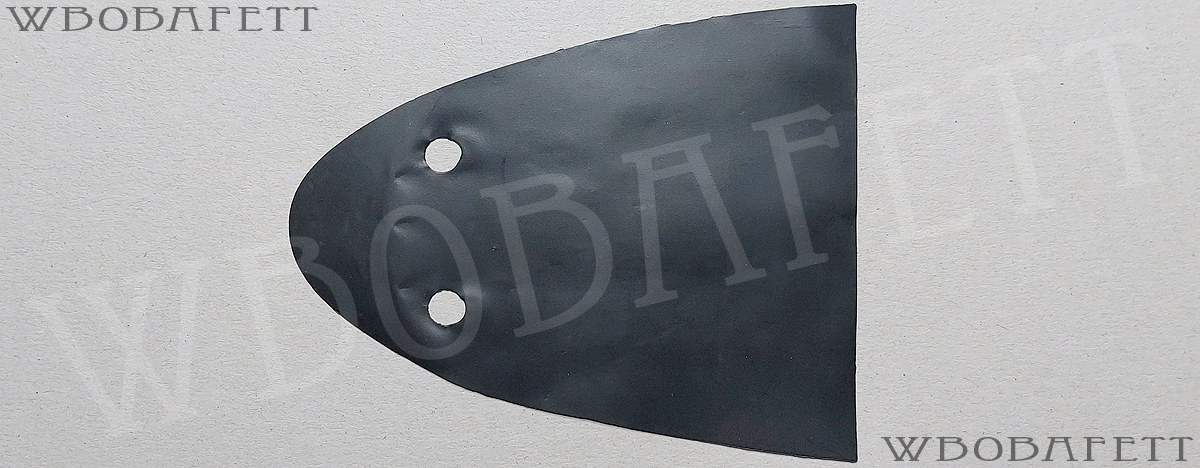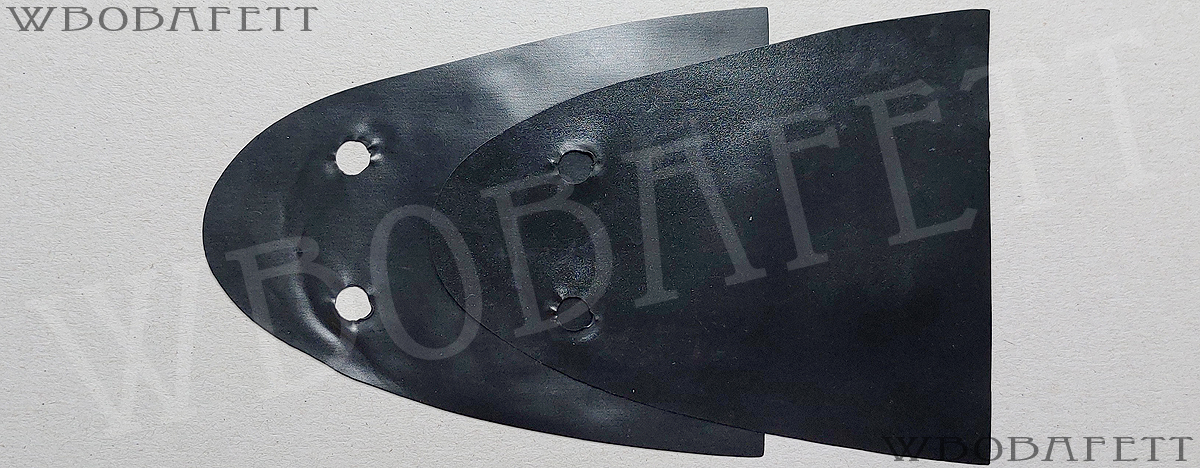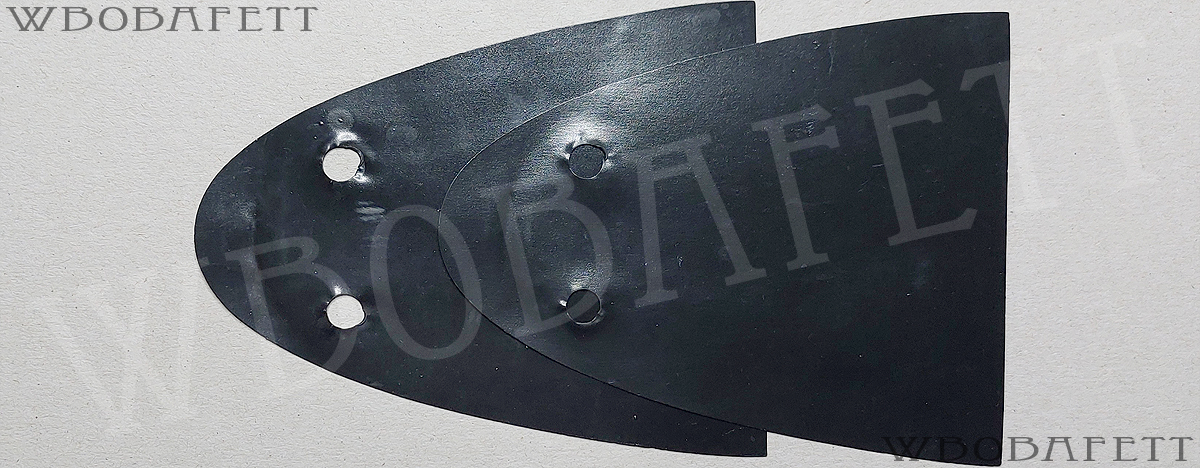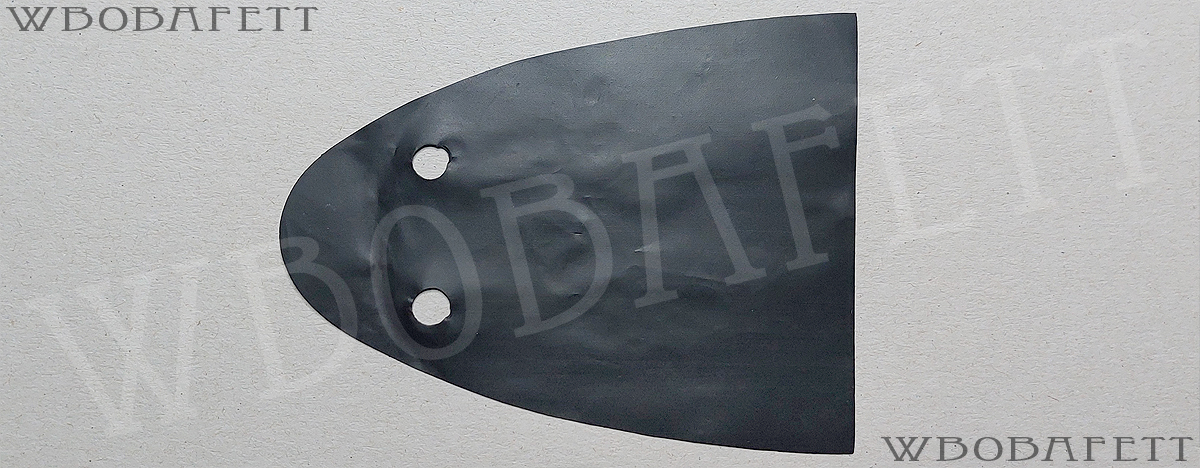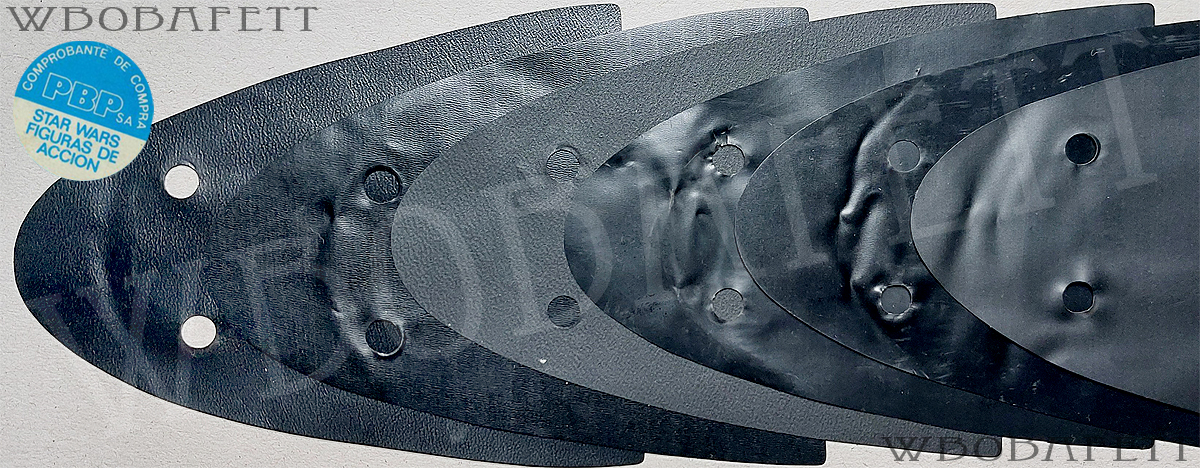Darth Vader Cape
The Darh Vader Cape was usually released with the following combinations of colour to figure:
Black Vinyl Cape:
There are 18 main variations plus subvariants. Subvariants do exist and may not all be documented. As a result of the fact that these were produced from a vinyl sheet bought from a third party involved, the subvariants may vary heavily depending on the supplier.
Vinyl cape material (PVC) is made out of a heated mass, rolled and milled in several processes to finally get printed or not. That is important to know, because shrinkage can occur to them when heated again, also depending if they were cold milled or heated milled in the last steps and the directions they were milled. Giving exact dimensions of 35+ year old PVC capes is not very helpful for a guide. They were likely die-cut under tension which would also contribute to capes produced in varying sizes from the same source.
So overlaying those to see differences isn’t helpful in most cases. What we have to do is look for overall differences in shapes, forms and die-cuts. For that reason I will refrain on measurements on all vinyl capes but have a scale on all my pictures for reference.
A Darth Vader Cape does not have a given front or back side. But all of those capes have a left and right side determined by the asymmetrical shape of the cape. A front and back side was then assigned to make them comparable in the guide.
M1 was produced by KADER in Hong Kong. This one is a very early Kader cape and came without crosshatch pattern. The inverted round corners and the very narrow armholes are also a very good telltale.
The following versions are known:
- smooth/faint, no crosshatch (M1a)
M2 was produced by KADER in Hong Kong. Kader capes can be distinguished by their very round formed collar. The armholes are usually not in line and the bottom corners are sharp. Early Kader M2 capes came without crosshatch pattern.
The following versions are known:
- dimples/faint, no crosshatch (M2a)
- smooth/smooth, no crosshatch (M2b)
- crosshatch/smooth, long version (M2c)
- crosshatch/smooth, short version (M2c)
M3 was produced by KADER in Hong Kong. Kader capes can be distinguished by their very round formed collar. The armholes are usually not in line and the bottom corners are rounded to only one side.
The following versions are known:
- grid pattern/crosshatch (M3)
M4 was produced by KADER in Hong Kong. Kader capes can be distinguished by their very round formed collar. The armholes are usually not in line. M4 has a very similar corner shape compared to M5, but the cape itself is much taller.
The following versions are known:
- faint lines (dull)/crosshatch (M4a)
- crosshatch/faint lines (dull) (M4a)
- crosshatch/faint lines (M4b)
- rough (dull)/crosshatch (M4c)
- rough (glossy)/crosshatch (M4d)
M5 was produced by KADER in Hong Kong. Kader capes can be distinguished by their very round formed collar. The armholes are usually not in line. M5 has a very similar corner shape compared to M4, but the cape itself is much shorter.
The following versions are known:
- faint lines (dull)/crosshatch (M5a)
- crosshatch/faint lines (dull) (M5a)
- crosshatch/faint lines (M5b)
- rough (dull)/crosshatch (M5c)
- rough (glossy)/crosshatch (M5d)
M6 was produced by UNITOY in Hong Kong. It is the earliest cape produced by UNITOY. The armholes are too narrow so that those mostly only survived with splits. The bulgy top and sides of the cape are comparable to other early Unitoy capes on Leia and Ben and give this variant a distinctive look.
The following versions are known:
- smooth/smooth no crosshatch (M6)
- smooth/smooth no crosshatch (M6) intact example
M7 was produced by UNITOY in Hong Kong. These capes are also early produced. The shape of the collar has a bulgy top and a very bulgy and dented cut to the side. The corners are formed sharp and inverted.
The following versions are known:
- faint/crosshatch (M7)
- faint/crosshatch (M7, slightly different shape)
M8 was produced by UNITOY in Hong Kong. The shape of the collar has a bulgy top and a bulgy and dented cut to the side. The “spooky” corners are a good telltale on those.
The following versions are known:
- smooth (dull)/crosshatch (M8)
M9 was produced by UNITOY in Hong Kong. The shape of the collar has a bulgy top and a bulgy and dented cut to the side. The corner to one side is more rounded.
The following versions are known:
- faint lines (dull)/crosshatch (M9a)
- faint lines (glossy)/crosshatch (M9b)
M10 was produced by UNITOY in Hong Kong. Because of their more symmetrical shape these capes are harder to distinguish from versions made by KADER. Still the overall shape is more bulgy. M10 has a very similar shape compared to M11, but the cape itself is much shorter. The armholes are usually not in line.
The following versions are known:
- faint lines (glossy)/crosshatch (M10a)
- no lines (glossy)/crosshatch (M10b)
M11 was produced by UNITOY in Hong Kong. Because of their more symmetrical shape these capes are harder to distinguish from versions made by KADER. Still the overall shape is more bulgy. M11 has a very similar shape compared to M10, but the cape itself is much longer. The armholes are usually not in line.
The following versions are known:
- crosshatch/faint (dull) (M11)
M13 was produced by an unknown factory in TAIWAN. Taiwan capes can be distinguished by their small armholes, the lack of any crosshatch pattern and their unique surface structures. They also have a large collar, which was achieved by lowering the armholes.
The following versions are known:
- smooth/rough, no crosshatch (M12a)
- faint/smooth, no crosshatch (M12b)
- smooth/smooth, no crosshatch (M12c)
- very thick material (M12d) [NO PICTURE]
M13 was produced by GLASSLITE in Brazil. Thes capes can be distinguished by two symmetrical bulges to the top of the cape, the lack of crosshatch pattern and their gloosy and very smooth surface. The armholes are widely spaced and the corners are pointed but slightly round.
The following versions are known:
- both sides smooth/flimsy material (M13a)
- both sides smooth/rigid material (M13b)
M14 was produced by TOP TOYS in Argentina. The overall shape of the cloak is very narrow. There is no crosshatch pattern, but both sides have some kind of leathery texture. The material tends to curl very much.
The following versions are known:
- smooth leathery/smooth leathery (M4a)
M15 was produced by TAKARA in Japan. This cape also has a wide space between the armholes. There is no crosshatch pattern present, but the cape has a smooth and a rougher side texturewise. The cape is extremly wide compared to all vintage produced capes.
The following versions are known:
- smooth/rough, no crosshatch (M15)
M16 was produced by LILI LEDY in Mexico. Ledy capes can be distinguished by their rounded bottom and the very round corners. The top of the cape is also pointed. All Ledy capes come without crosshatch pattern.
The following versions are known:
- flimsy, both sides smooth (M16a)
- thin, both sides smooth and dull (M16b)
- faint lines (dull)/smooth (M16c)
- faint lines (glossy)/smooth (M16d)
M17 was produced by POCH in Spain. The armholes to this cape are quite big compared to other vintage capes. The outer lines are often frayed, indicating a blunt or damaged cutting tool. Poch capes came without crosshatch pattern.
The following versions are known:
- smooth/smooth, no crosshatch (M17a)
M18 was produced by PBP in Spain. PBP capes often have a step to the outer line from the cutting tool. They can be found with PBP figures (Fam VIII no coo) but also were packed with FamI no coo figures distributed in Belgium by Clipper. All PBP capes came without crosshatch pattern, have very rounded edges and have several unique surface patterns.
The following versions are known:
- leathery/smooth, no crosshatch (M18a)
- leathery (with lines)/smooth, no crosshatch (M18b)
- rough/smooth, no crosshatch (M18c)
- faint/smooth, no crosshatch (M18d)
- smooth/smooth, no crosshatch (M18e)
- smooth/smooth (both sides dull), no crosshatch (M18f)
The RETRO COLLECTION was introduced in 2019 by HASBRO. The figures are licensed reproductions made to look like the figures from the 70s and 80s. These figures look very similar to the originals at first glance, but on closer inspection you can see clear differences. The capes are also made like look-a-likes.
The Vader cape is much wider and taller then any vintage cape known. Both sides are smooth and therefore no crosshatch pattern is present.
*Coming soon
